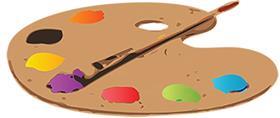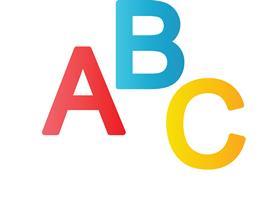Some of our favourite activities requiring little or no preparation - designed to be used in a minor or major emergency!
Maybe it’s a minor emergency when you suddenly find you have five minutes left at the end of a class and have nothing prepared. Or maybe you suddenly think the class would benefit from a shift in focus but you’re not sure what to do. You might experience a major emergency when you have to take over someone else’s class without warning or discover that you don’t have enough students to do the class you’d planned and need to do something else while you make a new plan!
All of these activities require no (or very little) preparation. You don’t even need to read the instructions before you start using them!
Minor emergencies Major emergencies
Minor emergencies
(3-10 minutes)

Back to the board
Summary: a short game in which the class gives a student clues to help them guess a word
Objective: vocabulary revision
1. Call for a volunteer who sits with their back to the board, facing the class.
2. Write a word on the board and tell the class to give clues in English to enable the volunteer to guess the word.
This can also be done as a team game.
1. Divide the class into two groups. Call for a volunteer from each group to sit facing the class.
2. Write a word on the board. Each team defines the word for their team member. The first to say the word wins a point.
3. Continue, allowing different team members to come to the front of the class to guess the word.

First impressions
Summary: students create a picture on the board and then invent a story based on the picture
Objective: vocabulary for describing; storytelling
This activity works especially well with younger learners who enjoy drawing on the board and have lots of imagination when it comes to making up stories.
1. Draw a horizontal line across the middle of the board.
2. Hand the marker or chalk to a student and ask them to add to the picture you have started. The student might interpret the line as the horizon and draw a house, or he might see it as the inside of a room and add a chair - anything is fine.
3. Continue with students coming up to the board and each adding an item to the picture.
4. When you feel the picture is sufficiently detailed, ask students to name what they can see in the picture. This can be done first in pairs, or directly with the open class.
5. If there’s time, tell students in pairs to invent a story that relates to the scene. Students tell their stories to the class and vote which they think is the best.

The questions game
Summary: students have to guess the identity of a famous person by asking yes / no questions. These are questions that can only create the answer yes or no.
Objective: new vocabulary; vocabulary revision; question forming
1. Think of a famous person (for this example, we’ll use Tiger Woods).
2. Tell students you have a famous person in mind and that they must ask you questions to find out who it is. You will only answer yes or no and only respond if the question is correct.
For example:
Is it a man? - Yes
Is he English? - No
Is he Spanish? - No
Is he American? - Yes
Is he an actor? - No
Does he play a sport? - Yes
Does he play soccer? - No
Does he play golf? - Yes
Is he Tiger Woods? - Yes
3. When a student guesses your famous person, that student then thinks of a person and writes the name down on a piece of paper. The other students in the class ask questions to guess who it is, and so on.
4. If the class is large or the activity is rather slow, put students into small groups to continue the game. This is an excellent way to practise nationalities, jobs, sports and how to ask questions. It can be made more difficult by including historical figures, so the students have to ask questions in the past tense.

Using the coursebook
Summary: three activities encouraging students to review the vocabulary in their coursebooks / notebooks
Objective: sentence forming; vocabulary revision; pronunciation
Anagrams
1. Tell students to organize themselves into groups of three or four.
2. Meanwhile, look back in the coursebook and select about five words that students have learned in previous lessons. Write the words as anagrams on a piece of paper.
3. Tell students that you are going to write anagrams on the board and in their groups they have to unscramble the words. The first group to finish shouts Stop! and then reads out the words with the correct spelling and definition.
4. If more time is available, groups look back through their coursebooks or their vocabulary notebooks and write five to ten words as anagrams for other students to decipher.
5. Give each group a piece of paper and tell them to write down their anagrams.
6. Pass the pieces of paper from group to group and get them to unscramble the anagrams.
7. Stop the activity. The group with the most words is the winner. Ask the group to read out their list and check spelling and meanings as they do so.
Vocabulary definitions
1. Tell students to organize themselves into three groups.
2. Meanwhile, look back in the coursebook and select about five words that students have learned in previous lessons.
3. Define the words. The first group that says the word wins a point.
4. For a longer version, tell students to look back through their coursebooks or their vocabulary notebooks and select five to ten words.
5. Each group then takes it in turns to define their words to the other two groups. The group that gets the word first wins a point and the group that has the most points at the end of the activity is the winner.
Sounds
1. Write a selection of four or five phonemes on the board and ask students to think of a word that has each sound.
2. Divide the students into groups. Tell them they have a given time to look back at their coursebooks or notebooks and to list as many words as they can find that contain each sound. The group with the most words at the end of the time limit is the winner.
3. Check by getting the students to read aloud the words they have for each sound and allowing the others to decide if they are right or not.
4. If time allows, take four or five pieces of paper and write one of the phonemes at the top of each piece. Put these on the walls of the classroom and tell students to go round and write up the words they found on each piece of paper.
5. These can be left on the walls as a reminder and added to in future classes.
Major emergencies
(10-30 minutes)

Identities
Summary: students pretend to be famous people and try to guess one another’s identities
Objective: oral fluency development
Material: music (optional)
1. Tell students to think of a well-known person that they admire or can’t stand.
2. Students imagine they are guests at a party. Put on some music, if you have some. Students get up and have to go round and start conversations with each other. Tell them they are NOT allowed to mention their names but to try and work out who the other students are. Tell them not to say who they think the other people are during the activity.
3. When you see that students have spoken to a number of other ’guests’, stop the music and ask students to sit down. See if they were able to work out the identity of the people they spoke to.

What’s Matilda doing?
Summary: a team competition in which students draw activities for other group members to identify
Objective: oral practice of the question; affirmative form of almost any structure
Material: paper and scissors
1. Think of a structure that you have focused on recently, e.g. the present continuous. Now think of an activity you can express using this structure, e.g. eating spaghetti. On the board, draw a stick figure eating spaghetti. Tell your students this figure is Matilda and ask What’s Matilda doing?
2. When students have told you what Matilda is doing (using the present continuous), divide the class into two or four groups and get each group to list ten other activities for Matilda to do. Tell them another group will have to draw these activities, so they can make them challenging.
3. Meanwhile, cut up some paper to create enough slips so that each group has ten, and ensure you have enough paper for students to draw on.
4. Give ten slips of paper to each group and get them to write one of their activities on each slip of paper.
5. Pass the finished slips from one group to another and give each group paper to draw on. Place the slips face down in the middle. Group members must take it in turns to pick up a slip and draw the activity described. They cannot speak. When another group member says exactly what is on the slip, someone else takes a turn. The group that guesses all the activities first wins the game.

Obsession
Summary: students try to dominate conversations with their ’obsession’ and guess what their classmates’ obsessions are
Objective: oral fluency development; expressions of likes and dislikes
Preparation time: 5 minutes
Material: slips of paper; music (optional)
1. Cut up enough slips of paper to give one to each of your students. On each slip write the name of something someone could become obsessed with, e.g. litter on the streets, people with pet dogs, noise, motorbikes, shop assistants who are rude, etc.
2. Give a slip to each student and tell them that this is their obsession. Check they understand what it means.
3. Tell students to stand up and get into groups of three. Tell them to imagine they’re at a party. Put on music, if you have some. They have to initiate a conversation about anything they want and manipulate it to try and talk about their obsession. Tell them NOT to tell others exactly what their obsession is.
4. After a few minutes, stop the music (if it’s on) and tell students to change groups so that they are with two new people. Continue until more or less everyone has spoken to everyone else.
5. Ask students to sit down again. Go round the class and see who can guess what their classmates’ obsessions were.
You might want to use this activity to practise language connected with strong likes and dislikes.
Analyze this
Summary: students create pictures and then analyse one another’s characters
Objective: oral fluency development
1. Draw the following diagram on the board and ask your students to copy it so that it occupies about half a page in a small notebook.
2. Tell students they have 45 seconds to draw a simple picture incorporating the lines and circles in each of the six squares.
3. Tell students that each square tells them something about themselves. Write these meanings above or below each square: (top row) SELF, OTHERS, FAMILY; (bottom row) WORK, FUTURE, LOVE. In pairs, students should take it in turns to look at each other’s pictures and analyse the meaning of what they see. Encourage them to use their imaginations and read as much as they can into each drawing. If you have more time, you could get students to change pairs and do the analysis again and then compare the different interpretations.

Scategories
Summary: students write vocabulary for different categories starting with a given letter
Objective: vocabulary revision and extension: arguing your point of view
1. Get students to copy a table like the following, but without the examples given. (You can use any categories you want.)
2. Put students into small groups (no more than five per group) and tell them that when you give them a letter, they have to write a word that starts with that letter under each category. Give students a maximum of three minutes to do this but if one group finishes before that they shout Stop! and everyone must stop writing.
3. Give groups points: five points for each correct word they have and five extra points if they are the only group that has this word. Sometimes you will have to help resolve disputes. For example, if students write dessert for the letter D under the category ’Food’ (see sample table above), is that really food or is it a meal? Allow students to argue their points of view (this is part of the game), but you have the final word.
Downloads
Click link to download and view these filesSurvival Guide: The emergency activity file: Article
PDF, Size 1.17 mb
Introduction to Survival Guide

We’re Lindsay Clandfield and Duncan Foord; two language teachers, teacher trainers and writers based in Spain. With more than forty years’ experience between us, we also consider ourselves survivors.
- 1
- 2
- 3
- 4
- 5
- 6
- 7
- 8
- 9
- 10
- 11
- 12
- Currently reading
Survival Guide: The emergency activity file
- 14
- 15
- 16
- 17
- 18
- 19














No comments yet